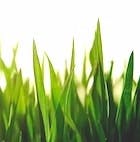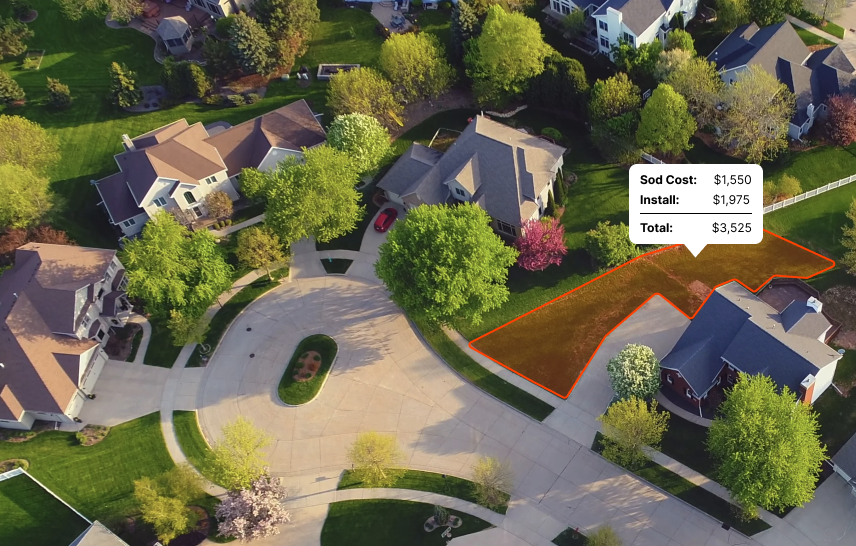Warm season grasses such as Bermuda grass and Zoysia grass are well-suited for the southern regions of Virginia, while cool season grasses like Kentucky Bluegrass and Fine Fescue thrive in the northern areas of the state. In summary, having a good understanding of Virginia's climate and grass zone enables homeowners to make informed decisions about the most suitable grass varieties for their lawns.”
Introduction
Virginia experiences a climate known as humid subtropical, characterized by hot and humid summers and mild winters. This unique climate significantly influences the choice of grass varieties that thrive in the state.
Virginia favors grasses that can flourish in high moisture levels and humid conditions. For optimal results, the ideal periods to lay grass in Virginia are late spring or early fall.
During these seasons, the temperatures are pleasant, and there is typically an ample amount of rainfall, which aids in the establishment of the grass. It is also crucial to take into account the specific grass zone in your Virginia locality, as it can impact the suitable grass types for your area.
Grass zones are determined by various factors like climate, soil composition, and topography. In Virginia, the grass zone ranges from warm to cool season grasses.
What are the best sod types for VA?
In the world of landscaping, not all grasses are created equal. Each thrives in a specific climate zone: cool, warm, or transition.
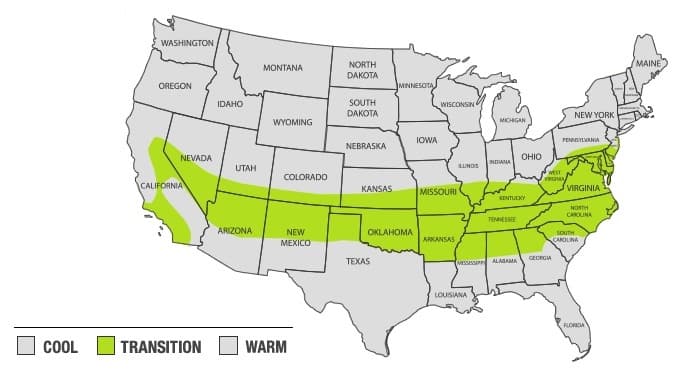
Virginia, with its transition zone climate, prefers a particular set of grasses that relish the a wide range of temperatures. The following sods are the easiest to grow and maintain in Virginia:
While it's possible to grow grasses meant for other regions with proper care, attention and timing, these are the most common grasses in Virginia for residential lawns.
Level Up Your Lawn Skills
Once per week we'll send you an interview from someone who has mastered the art of lawn care.
Recommended species for shade
When it comes to handling shade in Virginia, not all grasses are created equal. We've got you covered. Hold onto your lawn chairs, folks.
First up on our list, fine fescue. Remarkable grass, this one. It can survive well in 4-5 hours of sunlight per day. That's equivalent to your average Netflix binge-watch. But it also means less mowing for you.
Then, there's the tall fescue. This grass is like that uncle who pops up at ungodly hours and says, "Sleep is for the weak!" It endures 5 hours of sunlight just fine, and even puts up quite a fight in periods of drought.
How about Kentucky Bluegrass? Terry, one of our green-thumbed pros, has three of these lawns. They require about 6-8 hours of sunlight. Love sunbathing, they do, but they can also endure a fair bit of shade.
Next, St. Augustine. This is the equivalent of that kid who falls asleep anywhere, anytime. It adapts and endures shade with ease. Just like teenagers, St. Augustine isn't a big fan of bright light.
Now, don't despair if the shade is real stubborn in your yard. Like sitting under an umbrella on a cloudy day type of stubborn. We've got Zoysia. It's tough-as-nails and can handle shade lesser than 3 hours of sunlight per day.
But remember, grass needs nutrients to thrive, even the ones listed here. Water and feed them regularly. They might thrive in shade, but they can't do photosynthesis in the dark.
And consider cutting them some slack during winter. That's when they want to cozy up with a blanket of leaves, not choke on them.
Before you go around planting these in Virginia, remember the golden rule of sod: there's no such thing as one-size-fits-all. Your lawn has its own quirks, pick the grass that fits it best.
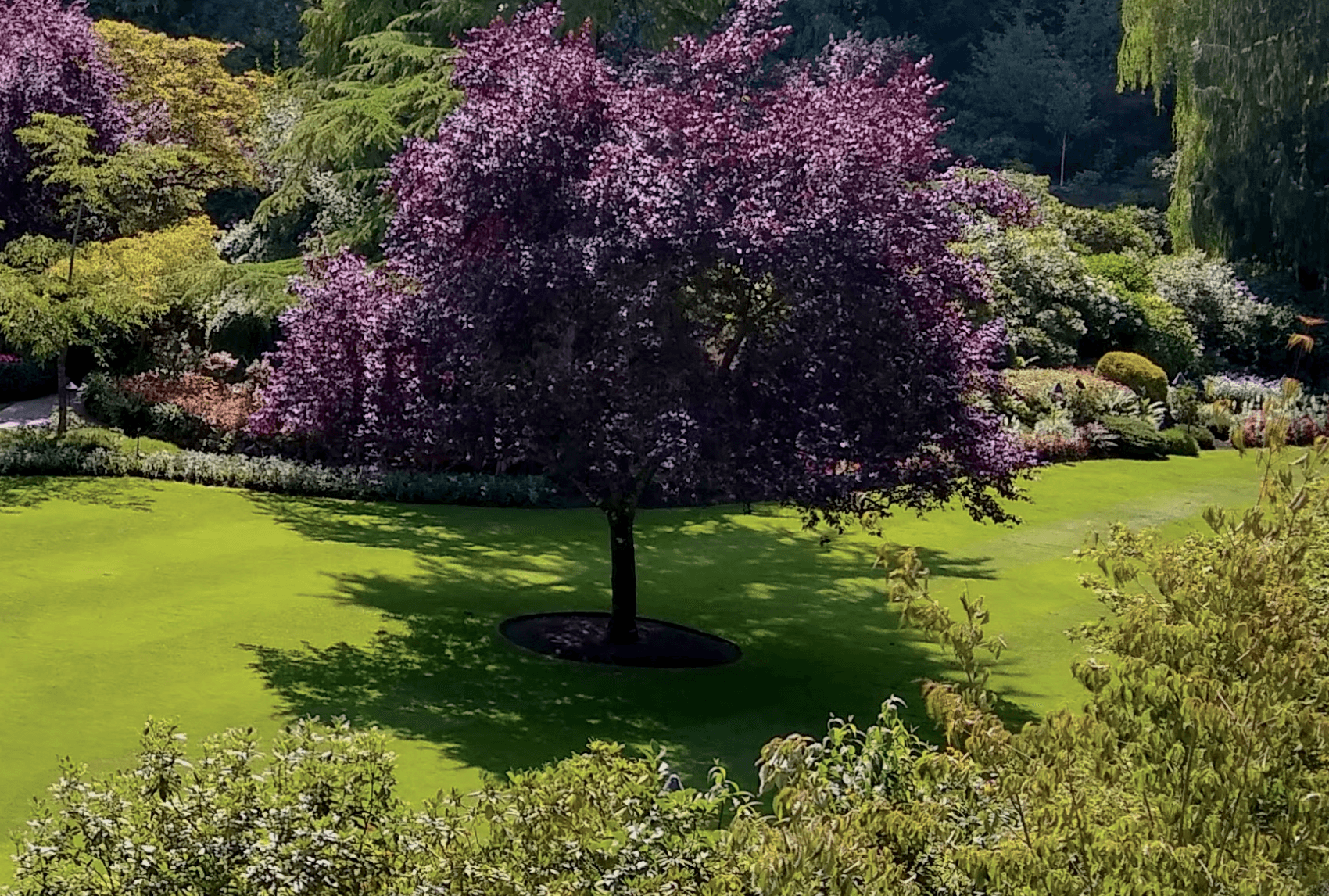
Recommended for full sun or partial sun
Choosing the right sod for your lawn depends heavily on the sunlight exposure in your yard. Different grass types have varying light requirements for optimal growth and appearance. Assessing whether your lawn receives full or partial sun is essential in selecting sod that will flourish and stay healthy in your specific environment.
Below are some sod options recommended for either full sun or partial sun conditions in VA:
| Grass Type | Sun | Good to Know |
|---|---|---|
| Bermuda | Full | Bermuda grass thrives in full sun and is known for its drought tolerance and ability to withstand high temperatures. |
| Zoysia | Full | Zoysia grass prefers full sun but can tolerate some shade. It is known for its dense turf and resistance to pests and diseases. |
| Tall Fescue | Partial | Tall Fescue is adaptable to a range of conditions, including partial sun, and is known for its deep root system and tolerance to drought. |
| Kentucky Bluegrass | Full | Kentucky Bluegrass prefers full sun and is prized for its fine texture, rich color, and ability to recover quickly from damage. |
| Perennial Ryegrass | Full | Perennial Ryegrass thrives in full sun and is known for its rapid germination, fine texture, and bright green color. |
What varieties stay green year-round?
As with anything agriculture related, there is some nuance to this question. There are many grasses that can stay green year round in but it depends heavily on your location within Virginia as well as any microclimates that may exist.
The following grasses have the ability to stay green year round in Virginia:
| Grass Type | Caveats |
|---|---|
| Bermuda | It typically goes dormant and turns brown after a few hard frosts in the fall and stays that way until temperatures consistently hit the 60s in the spring. |
| Zoysia | It can stay green nearly year-round in milder climates without severe winter freezes or overly high summer temperatures. |
| Tall Fescue | It typically stays green throughout the year in milder climates, given that it isn't overly stressed by heat or drought in the summer. |
| Kentucky Bluegrass | It can retain its green color for much of the year when well-maintained, though harsh winter temperatures can push it towards dormancy and a browner hue. |
| Perennial Ryegrass | It can stay vibrant and green throughout the year in many climates, unless conditions are extremely cold or dry. |
What is the best time to lay sod in Virginia?
For transition zones, consider the type of sod. For warm season grasses, aim for late spring. This gives them a full summer to establish before winter. For cool season grasses, fall is best, allowing roots to develop in mild temperatures. Whichever you pick, avoid extremes of summer and winter. So, late spring for warm grasses, fall for cool ones, and skip the severe seasons.
As you can see in the image below, you'll notice the most shoot growth (the grass above ground) and root growth in the spring and fall for cool season grases and during the summer for warm season grasses:
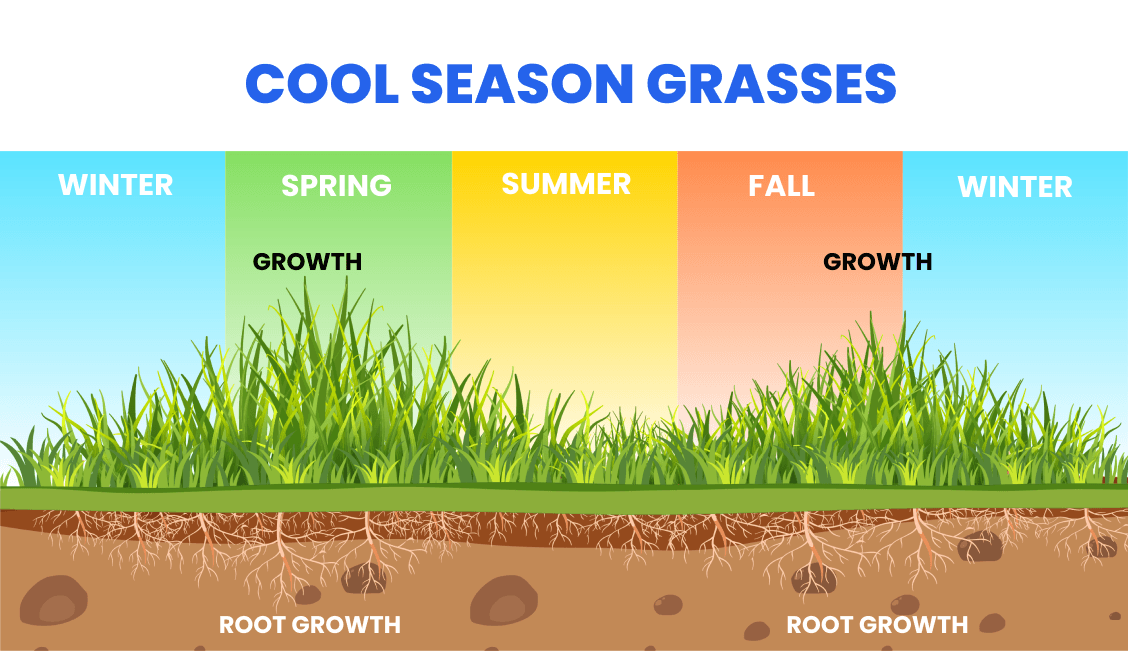
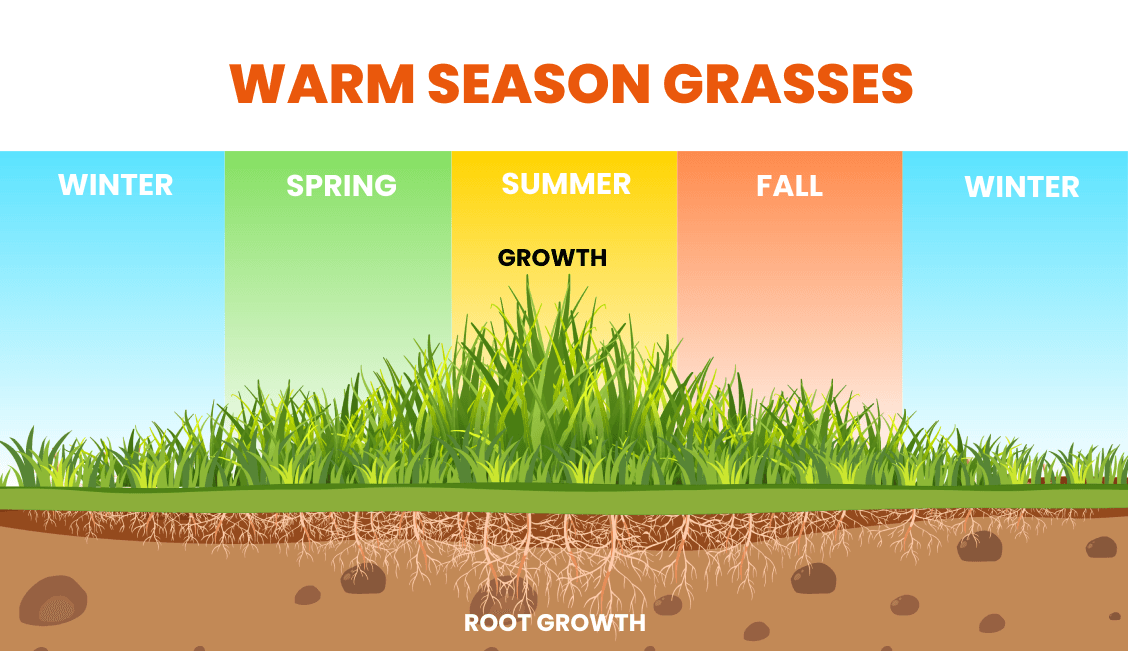
Find reputable companies for installing sod in VA
Here are the top problems you'll face when trying to get sod installed by a landscaping company:
- They're not transparent about pricing. You'll often get a quote that's way higher than you'd expect.
- They're hard to get ahold of on the phone or you'll reach out online but won't hear back.
- It's hard to pin them down for a specific date. Because you can only bring sod from the farm when there's decent weather, this causes some delays at times. It also has a short shelf life, so it's important to get it installed within a day or two of delivery.
We've done all the work for you. Click below to get a quote from one of the top installers in Virginia.
